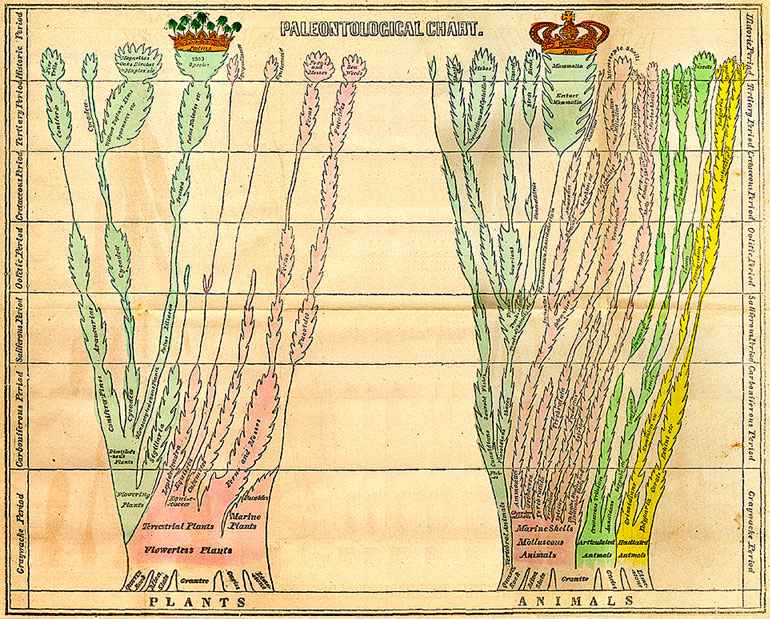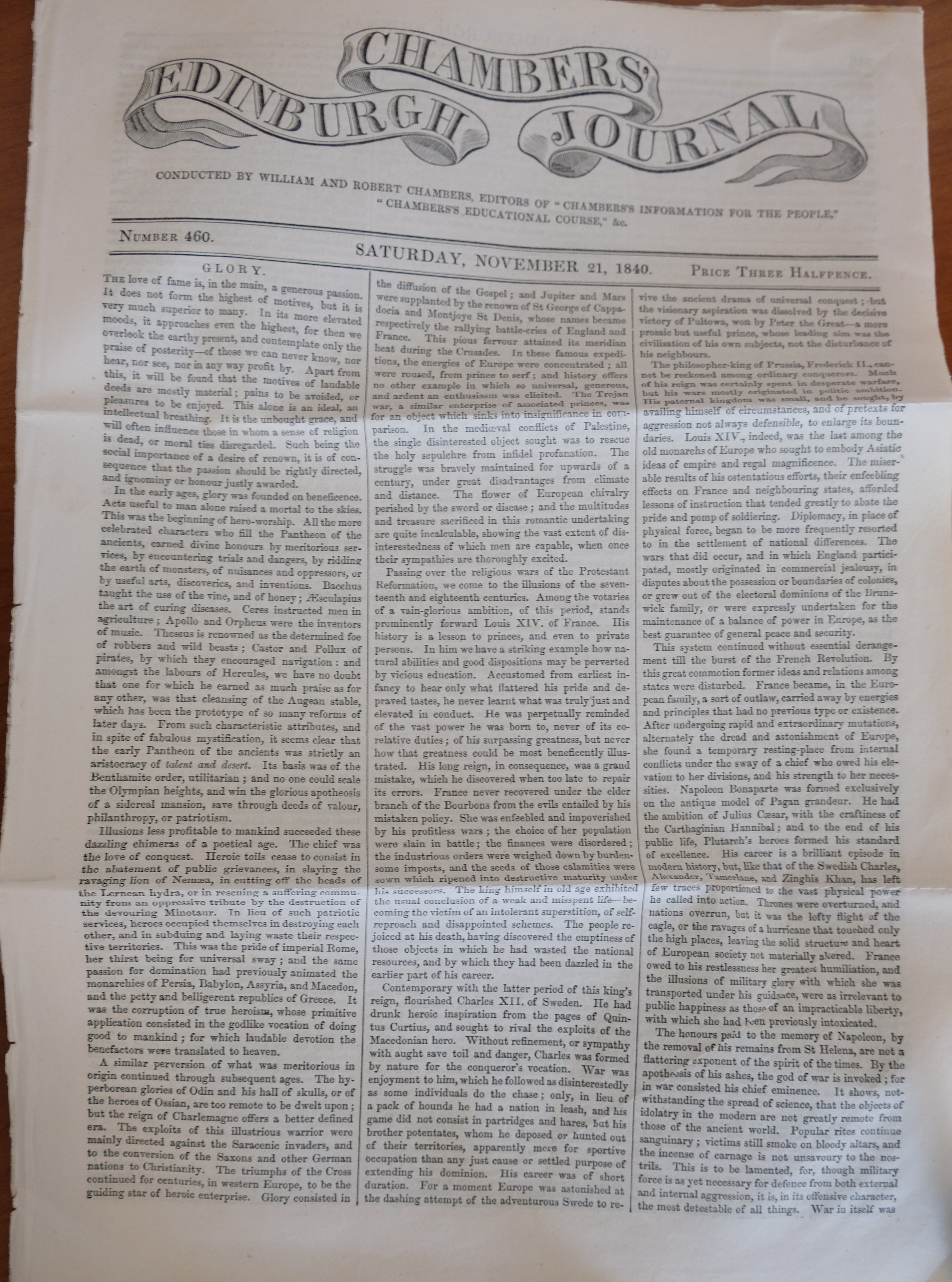|
Evolutionary Taxonomy
Evolutionary taxonomy, evolutionary systematics or Darwinian classification is a branch of biological classification that seeks to classify organisms using a combination of phylogenetic relationship (shared descent), progenitor-descendant relationship (serial descent), and degree of evolutionary change. This type of taxonomy may consider whole taxa rather than single species, so that groups of species can be inferred as giving rise to new groups. The concept found its most well-known form in the modern evolutionary synthesis of the early 1940s. Evolutionary taxonomy differs from strict pre-Darwinian Linnaean taxonomy (producing orderly lists only) in that it builds evolutionary trees. While in phylogenetic nomenclature each taxon must consist of a single ancestral node and all its descendants, evolutionary taxonomy allows for groups to be excluded from their parent taxa (e.g. dinosaurs are not considered to ''include'' birds, but to have ''given rise'' to them), thus permitting ... [...More Info...] [...Related Items...] OR: [Wikipedia] [Google] [Baidu] |
Biological Classification
In biology, taxonomy () is the scientific study of naming, defining ( circumscribing) and classifying groups of biological organisms based on shared characteristics. Organisms are grouped into taxa (singular: taxon), and these groups are given a taxonomic rank; groups of a given rank can be aggregated to form a more inclusive group of higher rank, thus creating a taxonomic hierarchy. The principal ranks in modern use are domain, kingdom, phylum (''division'' is sometimes used in botany in place of ''phylum''), class, order, family, genus, and species. The Swedish botanist Carl Linnaeus is regarded as the founder of the current system of taxonomy, having developed a ranked system known as Linnaean taxonomy for categorizing organisms. With advances in the theory, data and analytical technology of biological systematics, the Linnaean system has transformed into a system of modern biological classification intended to reflect the evolutionary relationships among organisms, ... [...More Info...] [...Related Items...] OR: [Wikipedia] [Google] [Baidu] |
Charles Darwin
Charles Robert Darwin ( ; 12 February 1809 – 19 April 1882) was an English Natural history#Before 1900, naturalist, geologist, and biologist, widely known for his contributions to evolutionary biology. His proposition that all species of life have descended from a Common descent, common ancestor is now generally accepted and considered a fundamental scientific concept. In a joint presentation with Alfred Russel Wallace, he introduced his scientific theory that this Phylogenetics, branching pattern of evolution resulted from a process he called natural selection, in which the struggle for existence has a similar effect to the artificial selection involved in selective breeding.. Darwin has been described as one of the most influential figures in human history and was honoured by Burials and memorials in Westminster Abbey, burial in Westminster Abbey. Darwin's early interest in nature led him to neglect his medical education at the University of Edinburgh Medical Schoo ... [...More Info...] [...Related Items...] OR: [Wikipedia] [Google] [Baidu] |
Tree Of Life (biology)
The tree of life or universal tree of life is a metaphor, conceptual model, and research tool used to explore the evolution of life and describe the relationships between organisms, both living and extinct, as described in a famous passage in Charles Darwin's ''On the Origin of Species'' (1859). Tree diagrams originated in the Middle Ages, medieval era to represent family tree, genealogical relationships. Phylogenetic tree diagrams in the evolutionary sense date back to the mid-nineteenth century. The term phylogeny for the evolutionary relationships of species through time was coined by Ernst Haeckel, who went further than Charles Darwin, Darwin in proposing Phylogenetics, phylogenic histories of life. In contemporary usage, ''tree of life'' refers to the compilation of comprehensive phylogenetic databases rooted at the last universal common ancestor of life on Earth. Two public databases for the tree of life are ''TimeTree'', for phylogeny and divergence times, and the ''Ope ... [...More Info...] [...Related Items...] OR: [Wikipedia] [Google] [Baidu] |
Robert Chambers (journalist)
Robert Chambers (; 10 July 1802 – 17 March 1871) was a Scottish publisher, geologist, History of evolutionary thought, evolutionary thinker, author and journal editor who, like his elder brother and business partner William Chambers (publisher), William Chambers, was highly influential in mid-19th-century scientific and political circles. Chambers was an early phrenology, phrenologist in the Edinburgh Phrenological Society. He was also the anonymous author of ''Vestiges of the Natural History of Creation'', which was so controversial that his authorship was not acknowledged until after his death. Early life Chambers was born in Peebles in the Scottish Borders 10 July 1802 to Jean Gibson (''c''. 1781–1843) and James Chambers, a cotton manufacturer. He was their second son of six children. The town had changed little in centuries. The town had old and new parts, each consisting of little more than a single street. Peebles was mainly inhabited by weavers and labourers living i ... [...More Info...] [...Related Items...] OR: [Wikipedia] [Google] [Baidu] |
Vestiges Of The Natural History Of Creation
''Vestiges of the Natural History of Creation'' is an 1844 work of speculative natural history and philosophy by Robert Chambers. Published anonymously in England, it brought together various ideas of stellar evolution with the progressive transmutation of species in an accessible narrative which tied together numerous scientific theories of the age. ''Vestiges'' was initially well received by polite Victorian society and became an international bestseller, but its unorthodox themes contradicted the natural theology fashionable at the time and were reviled by clergymen – and subsequently by scientists who readily found fault with its amateurish deficiencies. The ideas in the book were favoured by Radicals, but its presentation remained popular with a much wider public. Prince Albert read it aloud to Queen Victoria in 1845. ''Vestiges'' caused a shift in popular opinion which – Charles Darwin believed – prepared the public mind for the scientific theories of evolution ... [...More Info...] [...Related Items...] OR: [Wikipedia] [Google] [Baidu] |
English-speaking World
The English-speaking world comprises the 88 countries and territories in which English language, English is an official, administrative, or cultural language. In the early 2000s, between one and two billion people spoke English, making it the List of languages by total number of speakers, largest language by number of speakers, the List of languages by number of native speakers, third largest language by number of native speakers and the most widespread language geographically. The countries in which English is the native language of most people are sometimes termed the Anglosphere. Speakers of English are called Anglophones. History of Anglo-Saxon England, Early Medieval England was the birthplace of the English language; the Modern English, modern form of the language has been spread around the world since the 17th century, first by the worldwide influence of England and later the United Kingdom, and then by that of the United States. Through all types of printed and electron ... [...More Info...] [...Related Items...] OR: [Wikipedia] [Google] [Baidu] |
Philosophical Transactions Of The Royal Society B
''Philosophical Transactions of the Royal Society B: Biological Sciences'' is a biweekly peer-reviewed scientific journal published by the Royal Society. The editor-in-chief is Richard Dixon (UNT). Overview Each issue covers a specific area of the biological sciences. Each issue aims to create an original and authoritative synthesis, often bridging traditional disciplines, which showcases current developments and provides a foundation for future research, applications and policy decisions. Each issue is edited by one or more expert guest editors. The themes fall into one of four general categories: * Cell and Development * Health and Disease * Environment and Evolution * Neuroscience and Cognition All articles become freely accessible one year after their publication date. History ''Philosophical Transactions of the Royal Society'' was established in 1665 by the Royal Society and is the oldest scientific journal in the English-speaking world. Henry Oldenburg was appoint ... [...More Info...] [...Related Items...] OR: [Wikipedia] [Google] [Baidu] |
Jean-Baptiste Lamarck
Jean-Baptiste Pierre Antoine de Monet, chevalier de Lamarck (1 August 1744 – 18 December 1829), often known simply as Lamarck (; ), was a French naturalist, biologist, academic, and soldier. He was an early proponent of the idea that biological evolution occurred and proceeded in accordance with Naturalism (philosophy), natural laws. Lamarck fought in the Seven Years' War against Prussia, and was awarded a commission for bravery on the battlefield. Posted to Monaco, Lamarck became interested in natural history and resolved to study medicine.#Packard, Packard (1901), p. 15. He retired from the army after being injured in 1766, and returned to his medical studies. Lamarck developed a particular interest in botany, and later, after he published the three-volume work ''Flore françoise'' (1778), he gained membership of the French Academy of Sciences in 1779. Lamarck became involved in the Jardin des Plantes and was appointed to the Chair of Botany in 1788. When the French Nationa ... [...More Info...] [...Related Items...] OR: [Wikipedia] [Google] [Baidu] |
Zoonomia
''Zoonomia; or the Laws of Organic Life'' (1794–96) is a two-volume medical work by Erasmus Darwin dealing with pathology, anatomy, psychology, and the functioning of the body. Its primary framework is one of associationist psychophysiology Psychophysiology (from Greek , ''psȳkhē'', "breath, life, soul"; , ''physis'', "nature, origin"; and , '' -logia'') is the branch of psychology that is concerned with the physiological bases of psychological processes. While psychophysiolog .... The book is now best remembered for its early ideas relating to the theory of evolution, specifically forms of developmentalism similar to Lamarckism. However, despite Erasmus Darwin's familial connection as grandfather to Charles Darwin, the proto-evolutionary ideas in ''Zoonomia'' did not have a lasting influence. Summary The first volume, published in 1794, is divided into 40 sections, on a range of topics related to the body, the senses, and disease. Darwin classifies bodily and sensor ... [...More Info...] [...Related Items...] OR: [Wikipedia] [Google] [Baidu] |
Erasmus Darwin
Erasmus Robert Darwin (12 December 173118 April 1802) was an English physician. One of the key thinkers of the Midlands Enlightenment, he was also a natural philosophy, natural philosopher, physiology, physiologist, Society for Effecting the Abolition of the Slave Trade, slave-trade abolitionist, inventor, Freemasonry, freemason, and poet. His poems included much natural history, including a statement of evolution and the relatedness of all form of life, forms of life. He was a member of the Darwin–Wedgwood family, which includes his grandsons Charles Darwin and Francis Galton. Darwin was a founding member of the Lunar Society of Birmingham, a discussion group of pioneering industrialists and natural philosophers. He turned down an invitation from George III of the United Kingdom, George III to become Physician to the King. Early life and education Darwin was born in 1731 at Elston, Elston Hall, Nottinghamshire, near Newark-on-Trent, England, the youngest of seven chi ... [...More Info...] [...Related Items...] OR: [Wikipedia] [Google] [Baidu] |
Transmutation Of Species
The Transmutation of species and transformism are 18th and early 19th-century ideas about the change of one species into another that preceded Charles Darwin's theory of evolution through natural selection. The French ''Transformisme'' was a term used by Jean Baptiste Lamarck in 1809 for his theory, and other 18th and 19th century proponents of pre-Darwinian evolutionary ideas included Denis Diderot, Étienne Geoffroy Saint-Hilaire, Erasmus Darwin, Robert Grant, and Robert Chambers, the anonymous author of the 1844 book '' Vestiges of the Natural History of Creation''. Such ideas were associated with 18th century ideas of Deism and human progress. Opposition in the scientific community to these early theories of evolution, led by influential scientists like the anatomists Georges Cuvier and Richard Owen, and the geologist Charles Lyell, was intense. The debate over them was an important stage in the history of evolutionary thought and influenced the subsequent reaction to Dar ... [...More Info...] [...Related Items...] OR: [Wikipedia] [Google] [Baidu] |







